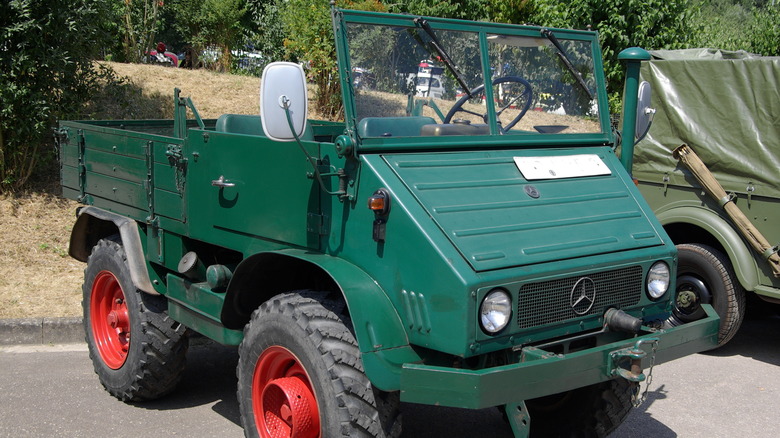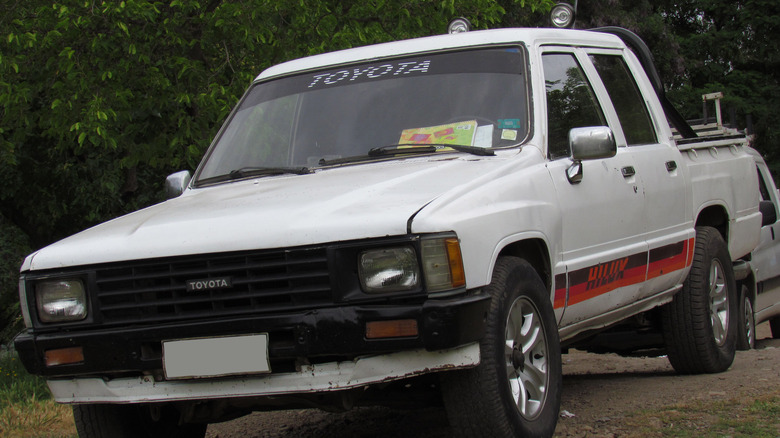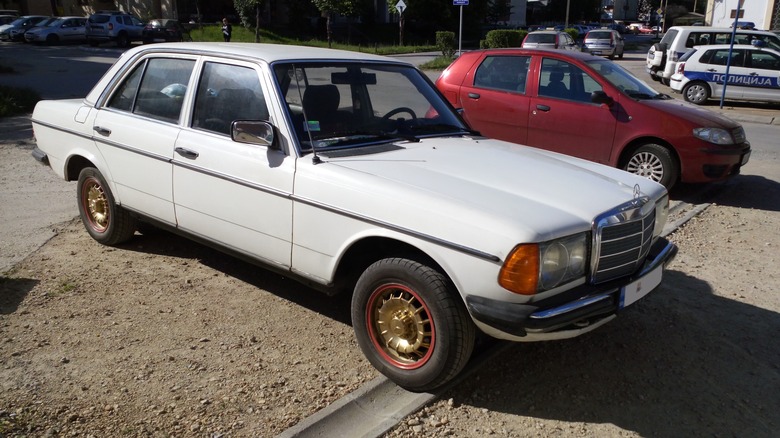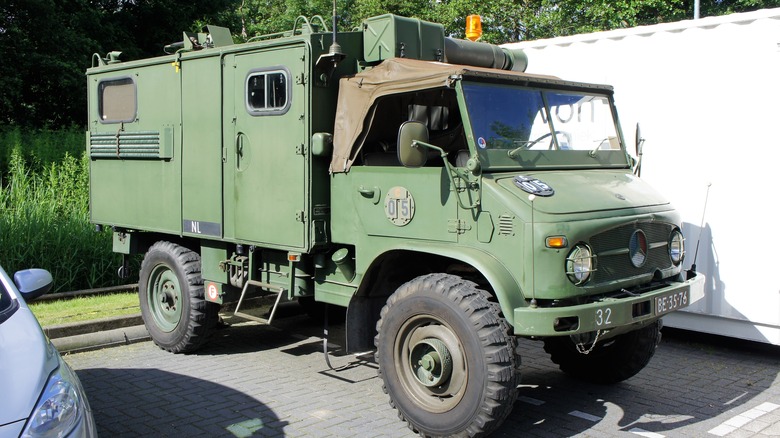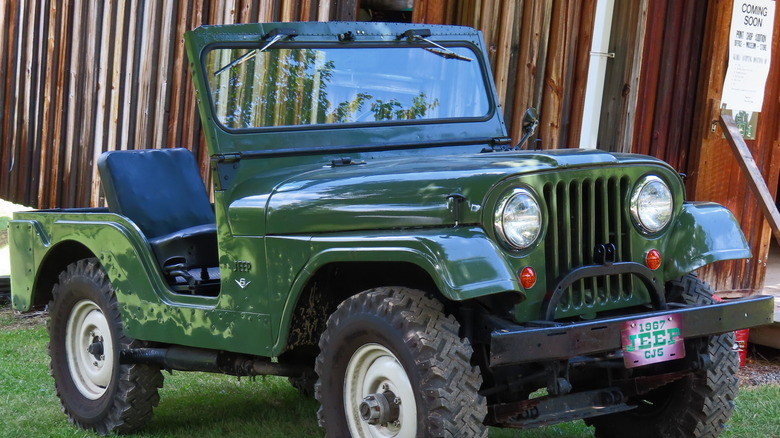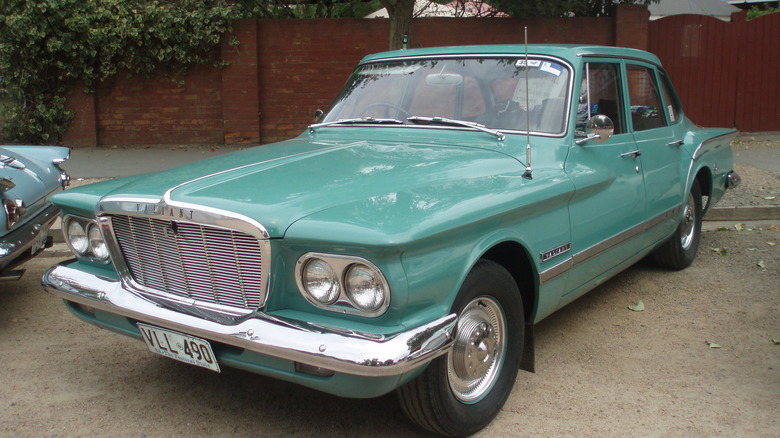5 Reliable Classic Cars And Trucks That Will Survive An Apocalypse
The world can sometimes appear to be an unstable place to live, with doom and gloom forecasted in the immediate future. Reasons for concern are often enumerated by erratic and painful economic shifts, climate-related disasters that seem to be growing in frequency and intensity, food scarcity, virulent viruses, and intense political tribalism. Needless to say, there is a sect of people who like to prepare for the worst, which may include learning to be self-sufficient or perhaps investing in an automobile that is rugged, durable, and easy to use.
Things to consider when looking into classic cars and trucks that could thrive in a plethora of civilization-ending scenarios are what kind of fuel these vehicles may utilize (such as gasoline, diesel, electric, or bio-fuel), how well the car or truck can handle driving on different kinds of surfaces, how much space it has, or maybe even how repairable the automobile is — you surely wouldn't want an overly complicated means of transportation that may be unfeasible or unpractical to fix. Here are some worthy cars and trucks that would serve you well in any theoretical end-times situation.
[Featured image by Berthold Werner via Wikimedia Commons | Cropped and scaled | CC BY-SA 3.0]
The Toyota Hilux is legendary for a reason
One of the most legendary vehicles to ever come into existence, known for its incredible durability and ease of repair, is the 1986 Toyota Hilux. This famous pickup trick is infamous for its ability to shrug off nearly anything, which is probably best highlighted by an episode of "Top Gear" where the hosts tried everything in their power to destroy a rusted Hilux they found at a farm.
In addition, this particular Hilux also had around 186,000 miles, but that did not stop the truck from standing up to the tests of "Top Gear," which included driving down stairs, slamming into buildings, letting the ocean tide completely submerge the vehicle, and even placing the Hilux at the top of a building that was demolished. After a few tiny repairs, the Hilux still ran.
What powers the 1986 Toyota Hilux is the beloved 2.4 liter four-cylinder RE engine, which offers incredible hauling capacity of upwards of a ton of additional weight — a surprising feat for a four-cylinder car. The RE engine is also easy to work on, so those out there looking for a nigh-invincible truck might do well to find a 1986 Toyota Hilux. There is a reason why the Hilux is widely considered to be one of the best pickup trucks ever made.
[Featured image by order_242 via Wikimedia Commons | Cropped and scaled | CC BY-SA 2.0]
The Mercedez-Benz W123 can reach 3 million miles
Another famously dependable automobile is Mercedes-Benz's classic W123. Created in 1975 and manufactured till 1986, the W123 offers three different engines, with two running off diesel instead of the standard issue gasoline. This is an important facet to consider while purchasing the W123 because, for those apocalypse-minded individuals out there, diesel is a far more stable fuel source than gasoline, which only has a shelf life of three to six months. What makes the Mercedez-Benz W123 so prolific is its design and engine, which has seen the car earn a reputation as one of the most indestructible and long-running automobiles of all time.
The engines utilized by the W123 are either the 200D, turbo-charged 300D, or the gasoline-using 280E. Each of these engines was an engineering marvel, and many of the parts used in the W123 were created to stand against rigorous usage and wear and tear. The simplicity of its design makes the W123 such an enduring vehicle, with some models still being used as cabs even today — one taxi driver used a 1976 W123 that managed to rack up over a little under three million miles!
[Featured image by KGC626 via Wikimedia Commons | Cropped and scaled | CC BY-SA 4.0]
The Unimog is perfect for rebuilding society
For those in the apocalypse market for a more versatile vehicle, the Mercedes-Benz Unimog is often considered one of the greatest and most steadfast automobiles that can handle all sorts of workloads and terrains. With a history that dates back to World War II, what was to become the Unimog had its origin in the horrors of global conflict. This means that the Unimog was designed to be beaten up, shot at, and able to handle varying and potentially hazardous surfaces and environments. Although only capable of top speeds up to 56 miles per hour, the Unimog has a beastly suspension and 4x4 capabilities that allow the vehicle to thrive in hostile off-road conditions.
Most Unimog models typically use diesel fuel and measure around 10 feet tall, and can haul loads of ten to 16 tons of weight, depending on the iteration. Beyond the size and weight capacity, the Unimog also generally has a wading depth of 1.2 meters or just under 4 feet. However, driving a Unimog requires some knowledge of truck shifting, and it has been noted that the Unimog has 24 forward ratios and 24 in reverse. Due to the multiple usages of the Unimog, the vehicle can handle all sorts of modular additions, which allows you to customize your Unimog in any manner you see fit. If you are looking for a true workhorse capable of surviving the collapse of society, the Unimog might be a solid investment.
[Featured image by Alf van Beem via Wikimedia Commons | Cropped and scaled | Public Domain]
The Jeep CJ-5 brought military vehicles to the masses
Of course, it would be a terrible omission to forget one of the most iconic vehicles of the last 100 years when it comes to the vision of dependability: the military-inspired Jeep CJ-5. The very thought of Jeep often invokes the visage of soldiers traveling through battlefields upon the said vehicle — the CJ-5 borrows much of its design from the famous military transport. In other words, Jeeps are adaptable automobiles built for so much more than simply zooming down the highway, and earning a reputation from the brutal conflict of World War II means that the Jeep can deal with environments and terrains that many would struggle to comprehend or surmount.
The open and short-bodied Jeep CJ-5 can pull double duty as a means of transportation and hauling, though it may lack the same space as full trucks due to its design. Built from 1954 to 1984, the CJ-5 has several different versions, such as diesel iterations or a V-8 engine, starting in 1973. With over 600,000 CJ-5s produced, the biggest issue to face these Jeeps is that they can roll over, so those driving these military-style vehicles should be very aware of the slope and angle of the Jeep to avoid such tragedies. Still, the Jeep CJ-5 is a well-designed vehicle that takes many of its elements from war, meaning it will survive most doomsdays.
[Featured image by MercurySable99 via Wikimedia Commons | Cropped and scaled | CC BY-SA 4.0]
The Plymouth Valiant is often considered the most reliable American car ever built
Although most examples of apocalypse-worthy cars on this list have been military-inspired or workhorses of the industry, the Plymouth Valiant might be an unexpected entry in this list of durable and rugged vehicles. Like other vehicles on this list, the Plymouth Valiant owed much of its longevity to a simple design, even when compared to other automobiles. Produced from 1960 to 1976, the Valiant typically hosted a 170 cubic inch Slant Six engine, though you can find some Valiants with a 273 cubic inch V8. Often considered one of the most reliable American cars ever made, the Valiant's biggest issue is the frame rusting long before any major component required repair.
Many aspects of the Plymouth Valiant's engine and design may seem ancient by modern standards, such as breaker points instead of electric ignition. But the cast-iron parts of the Valiant make the automobile exceptionally long-lived. Speaking with Hemmings, Dr. David George Briant credited the Valiant's durability to the robust Slant Six engine and its significantly thicker crankshaft. He added, "Their life could be astonishing, 400,000-plus miles, certainly." Though not nearly as adaptable as some other vehicles that could survive an apocalypse, the Plymouth Valiant is a classic car that is easy to fix and understand, dependable, and capable of attaining serious mileage with little fuss.
[Featured image by sv1ambo via Wikimedia Commons | Cropped and scaled | CC BY 2.0]
